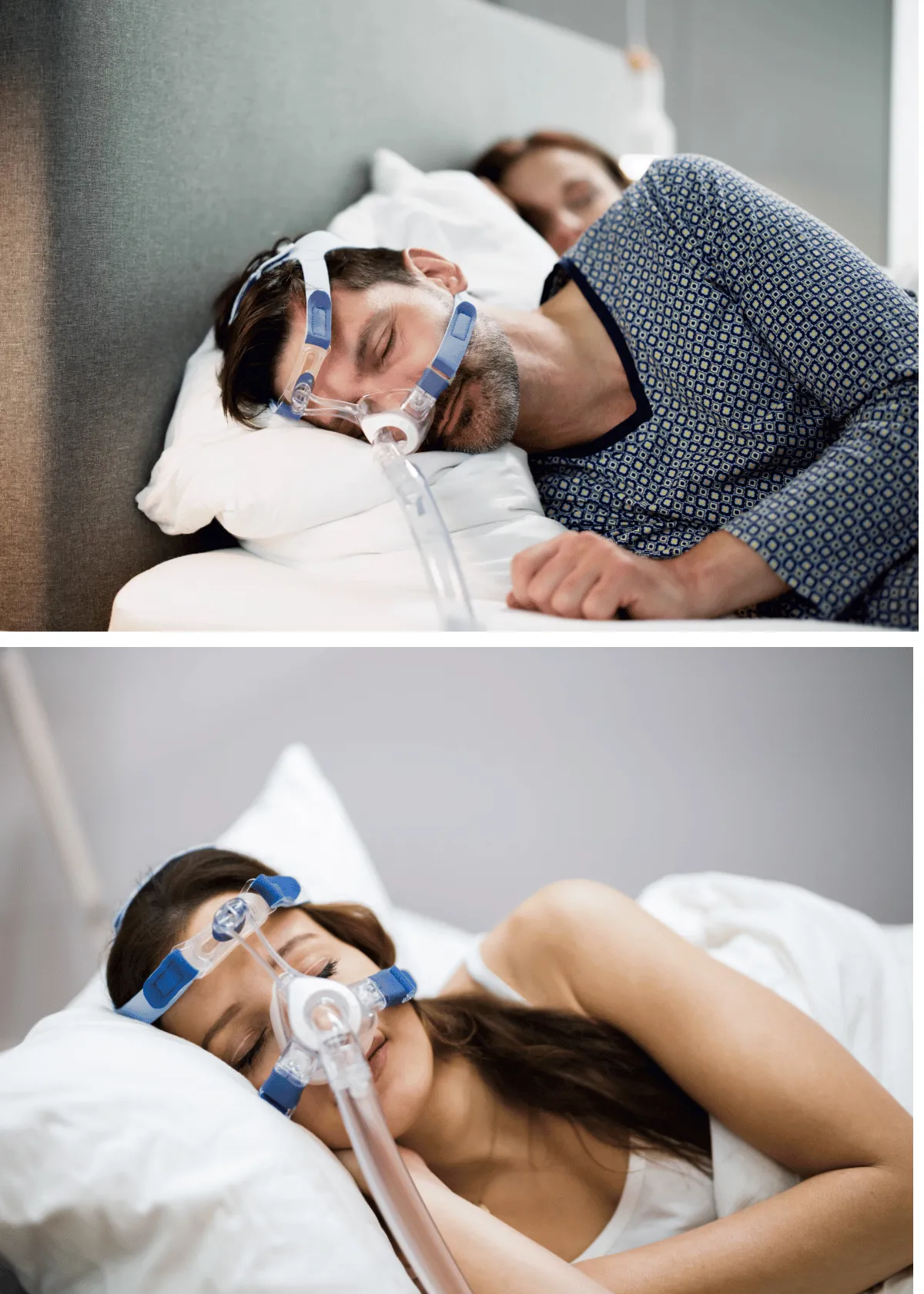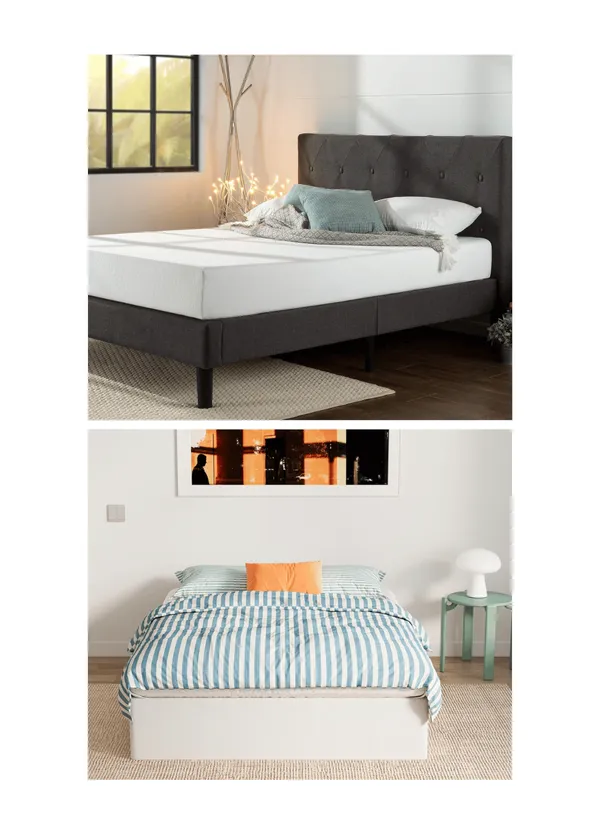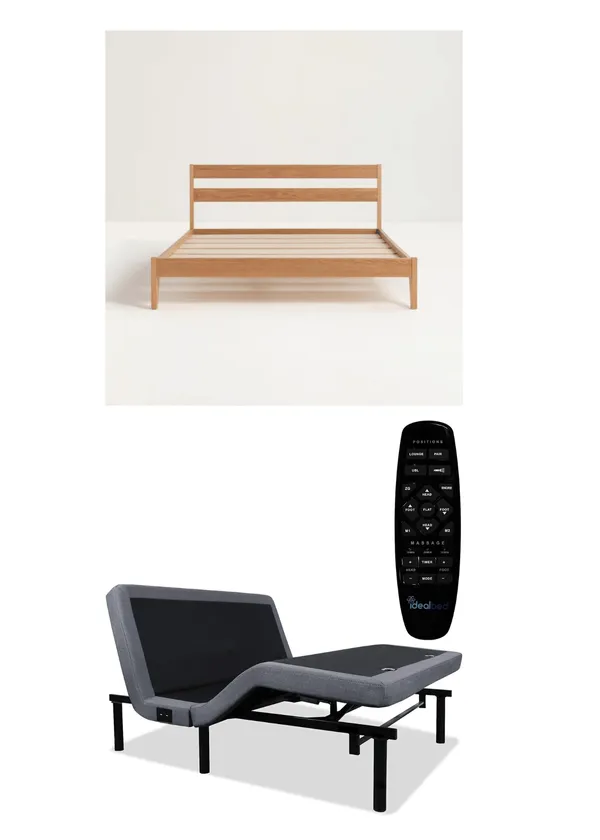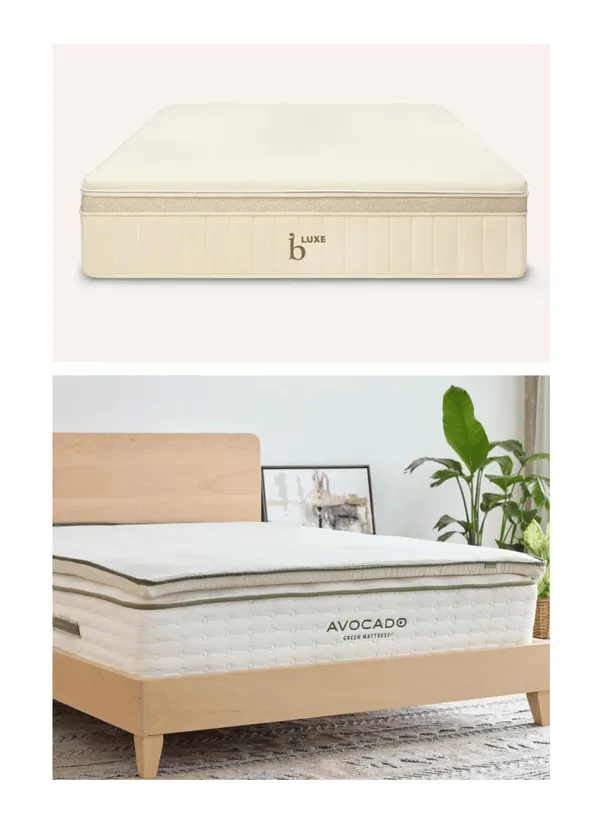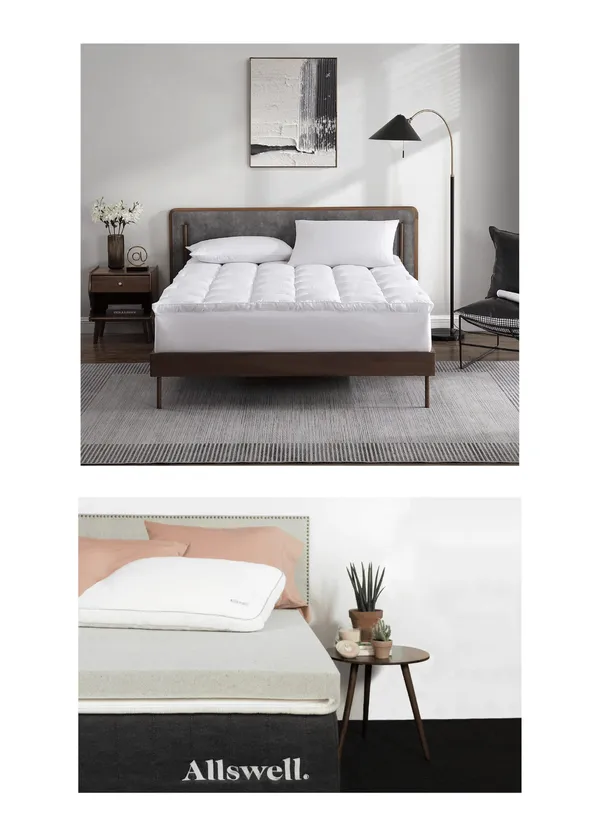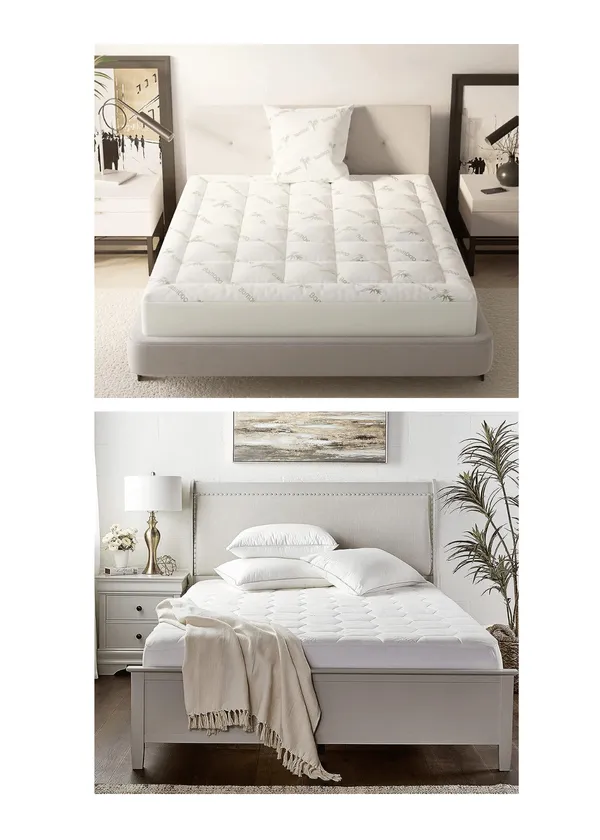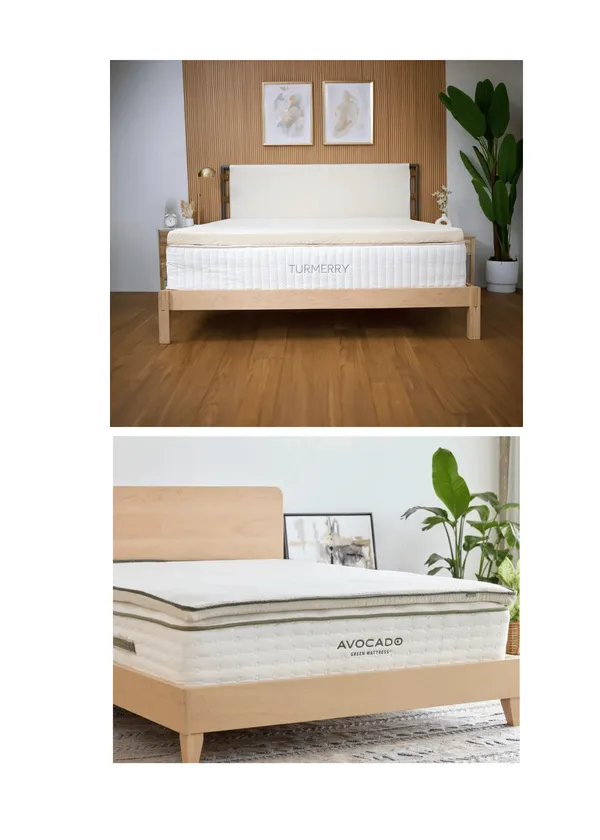(Last Update: 04/02/2024)
This content is created with integrity and impartiality; we do not receive direct compensation for this review. See our Mission and Core Values here.
Welcome to our Guide to Our Peaceful Nights, where we unravel the mysteries of sleep apnea, a condition that disrupts millions of peaceful slumbers worldwide.
Beyond mere inconvenience, sleep apnea poses significant risks to your health and well-being, from daytime fatigue to serious cardiovascular issues.
But what sets Soothie's Sleep Apnea apart?
Our focus is on innovative, comfortable, and effective solutions designed to restore your night's peace without the discomfort often associated with traditional treatments. Join us as we review how you can reclaim your restful nights.

What are the different types of Sleep Apnea?
Explore the three main types of sleep apnea: obstructive, Central, and Complex. Each affects breathing and requires unique treatment approaches.
Obstructive Sleep Apnea (OSA)
OSA is the most prevalent form, resulting from relaxing throat muscles, leading to an obstruction airway during sleep. Obstructive sleep apnea patients have serious snoring problems and repeated breathing interruptions.
Central Sleep Apnea (CSA)
CSA occurs when the brain can’t send the correct signals to the muscles controlling breathing, resulting in periodic breathing pauses. Unlike OSA, it's not caused by a physical airway blockage but by a communication failure between the brain and respiratory system.
Complex Sleep Apnea Syndrome
The Treatment-Emergent Central Sleep Apnea is a condition that combines features of both OSA and CSA. It can emerge in individuals being treated for OSA, particularly with CPAP use, indicating a more complex respiratory control system issue.
Identifying Symptoms of Sleep Apnea
Sleep apnea is a common undiagnosed sleep disorder that affects countless individuals, significantly impacting their quality of life. With its unique characteristics, sleep apnea requires a keen understanding of its symptoms and the right moments to seek professional advice. This exploration of the symptoms will equip you with the knowledge to identify signs of Sleep Apnea.
Recognizing the Red Flags
Unusual Noises During Sleep
One of the best signs of Sleep Apnea is snoring. It is not just about the patients who snore but how loud, persistent snoring often includes noticeable pauses in breathing, gasping, or choking sounds. These noises are not only a disturbance to restfulness for both the individual and their sleep partners but also a clear indicator of obstructed breathing pathways.
Daytime Fatigue and Sleepiness
Despite a full night's sleep, individuals with Sleep Apnea frequently experience excessive daytime sleepiness. This isn't the usual tiredness from a busy day or poor sleep hygiene; it's a profound fatigue that affects concentration, mood, and overall energy levels, making daily tasks and maintaining alertness a struggle.
When to Seek Professional Advice
Persistence of Symptoms
If the symptoms mentioned, particularly the unusual noises during sleep and excessive daytime fatigue, persist over time, it's better to consult a healthcare professional. Chronic sleep disruption and the resulting fatigue can seriously affect physical health, mental well-being, and overall quality of life, indicating a need for a professional evaluation.
Impact on Daily Life
When Sleep Apnea starts to significantly impact your daily life—through difficulty concentrating, memory problems, mood swings, or decreased performance at work or school—it's time to seek advice from a sleep specialist. These changes often signal that the body is not getting the restorative sleep it needs, highlighting the importance of professional intervention.
Exploring Causes and Risk Factors
Understanding Sleep Apnea's causes and risk factors is crucial for identifying those at risk and formulating effective prevention and treatment strategies. This condition, while complex, can often be attributed to a blend of biological and lifestyle factors and environmental influences.
Biological Causes of Sleep Apnea
Anatomical Variations
Certain anatomical characteristics can predispose individuals to Sleep Apnea. These include a narrow airway, enlarged tonsils or adenoids, and specific facial structures that restrict airflow during sleep. Such physical traits can cause the airway to collapse more easily, leading to the characteristic breathing pauses of sleep apnea.
Genetic Predisposition
Genetics also play a big role in developing Soothie's Sleep Apnea. A family history of sleep apnea can increase one's risk, suggesting a genetic component to the disorder. This predisposition and environmental factors can significantly increase the likelihood of experiencing sleep apnea symptoms.

Comprehensive Solutions for Sleep Apnea
Addressing Sleep Apnea requires a multifaceted approach that includes medical interventions, lifestyle changes, and attention to diet and exercise. Each element is crucial in managing and potentially alleviating the condition, offering hope for those affected.
Medical Interventions and Their Benefits
Continuous Positive Airway Pressure (CPAP) Therapy
Prevents Airway Collapse: CPAP machines keep the airway open throughout the night by delivering a constant air stream.
Improves Sleep Quality: Ensures uninterrupted breathing, leading to more restorative sleep.
Surgical Options
Uvulopalatopharyngoplasty (UPPP): Removes excess tissue from the throat to widen the airway.
Maxillomandibular Advancement (MMA): Repositions the jaw to increase the size of the upper airway.
Lifestyle Modifications for Better Sleep
Optimizing Sleep Environment
Minimize Noise and Light: Use earplugs and blackout curtains to create a conducive sleeping atmosphere.
Maintain a Comfortable Temperature: Ensure your bedroom is not too hot or cold, which can disrupt sleep.
Establishing a Sleep Routine
Consistent Sleep Schedule: Go to bed and wake up simultaneously daily to regulate your body's clock.
Pre-Sleep Relaxation Techniques: Engage in calming activities before bed, such as reading or meditation, to prepare your body for sleep.
The Role of Diet and Exercise
Dietary Adjustments
Reduce Caffeine and Alcohol Intake: Both substances can worsen Nocturnal apnea symptoms, especially when consumed close to bedtime.
Incorporate Sleep-Inducing Foods: Foods high in magnesium and potassium can help relax the muscles and promote better sleep.
Exercise Regularly
Weight Management: Regular physical activity helps reduce the severity of sleep apnea by decreasing neck fat, which can pressure the airway.
Strengthening Respiratory Muscles: Exercises like yoga can improve breathing efficiency and reduce the impact of sleep apnea.

Innovative Sleep Apnea Therapies
The landscape of Nocturnal apnea treatment is constantly evolving, with new therapies emerging to relieve those suffering from Sleep Apnea. These innovative approaches range from cutting-edge technologies to comfortable CPAP alternatives, natural herbal remedies, and supplements.
Cutting-edge Treatments and Technologies
Wearable Technology
Advancements in wearable technology have helped the development of devices that monitor sleep patterns and detect apnea episodes in real-time. These gadgets, often worn like a watch or a ring, provide valuable data that can help adjust treatment plans dynamically.
Hypoglossal Nerve Stimulation
This therapy involves a surgically implanted device that stimulates the hypoglossal nerve: it controls tongue movement during sleep. By activating this nerve, the tongue is kept in a position that prevents airway blockage, offering a novel solution for those with obstructive Sleep Apnea.
Sleep Apnea Treatment and Maintenance: Daily cleaning and maintenance of devices are crucial for effective treatment and ensure hygiene and functionality.
Comfortable CPAP Alternatives
Oral Appliances
Oral appliances are custom-fitted devices worn in the mouth during sleep. They adjust the jaw and tongue position to maintain air passage and ensure unobstructed breath. This method particularly appeals to patients who find CPAP machines cumbersome or uncomfortable.
Dental and Oral Health Considerations:
Personalizing your dental hygiene is key: Dental health, including how you rinse your mouth before sleeping bite and teeth alignment, plays a significant role in managing sleep apnea.
Positional Therapy
Positional therapy involves devices that encourage sleeping in a non-supine position to stop the tongue and soft tissues in the throat from blocking the airway prevent the tongue and soft tissues from blocking the airway. This approach is simple yet effective for individuals whose nocturnal apnea symptoms worsen when lying on their back.
Herbal Remedies and Supplements
Valerian Root
Valerian root is an herbal supplement recognized for its soothing properties, which can enhance sleep quality in individuals with Sleep Apnea. Through enhancing relaxation and decreasing the time required to fall asleep, valerian root can indirectly help manage sleep apnea symptoms.
Magnesium Supplements
Magnesium plays a great role in muscle relaxation, and its supplementation has been suggested to improve restfulness and reduce nighttime awakenings. For those with Sleep Apnea, magnesium supplements may help relax the muscles around the airway.
Innovative therapies for Sleep Apnea are transforming how this sleep disorder is managed, offering hope and improved quality of life to those affected.

Implementing Sleep Apnea Solutions at Home
Managing Sleep Apnea effectively often starts with changes you can implement in your home. By creating a sleep-conducive environment, adhering to sleep hygiene best practices, and exploring DIY solutions and home remedies, you can significantly improve your sleep quality and reduce the symptoms of nocturnal apnea.
Creating a Sleep-conducive Environment
Optimize Your Bedroom for Sleep
- Ensure your bedroom is dark and cool to promote uninterrupted sleep.
- Invest in comfortable mattresses and pillows supporting proper neck and spine alignment.
Reduce Environmental Disruptors
- Use blackout curtains or a mask to block out light.
- Consider white noise machines or earplugs to minimize noise disruptions.
Sleep Hygiene Best Practices
Establish a Consistent Sleep Schedule
- Aim to go to bed and wake up simultaneously every day, even on weekends.
- Develop a relaxing bedtime routine to signal the body that it's time to wind down.
Limit Stimulants and Screen Time
- Avoid caffeine and heavy meals close to your bedtime.
- Reduce exposure to screens and blue light in the evening to help your body prepare for sleep.
DIY Solutions and Home Remedies
Positional Therapy at Home
- Experiment with sleeping on your side rather than your back. Side sleeping can prevent the tongue and soft tissues from obstructing the airway.
- Use pillows or specially designed body pillows to maintain a side-sleeping position throughout the night.
Breathing Exercises and Throat Exercises
- Practice breathing exercises to strengthen the airway muscles and improve respiratory control.
- Engage in throat exercises, such as singing or playing wind instruments, to reduce the severity of sleep apnea symptoms by toning the muscles around the airway.

Monitoring and Maintaining Your Progress
Successfully managing Sleep Apnea is a continuous process that involves regular monitoring of your condition and making adjustments to your treatment plan as necessary. This ongoing commitment helps you achieve better restfulness and maintains these improvements over the long term.
Tracking Sleep Patterns and Improvements
Utilizing Sleep Tracking Devices
With the advent of wearable technology, tracking sleep patterns has become more accessible. Smartwatches and fitness trackers can monitor your sleep stages, duration, and quality. This data provides invaluable insights into how well your current management strategies are working and where there may be room for improvement.
Keeping a Sleep Diary
A sleep diary is a simple but effective tool for documenting your sleep habits, symptoms, and changes you notice over time. By recording details like bedtime, wake-up time, frequency of awakenings, and daytime sleepiness, you can gather subjective data that complements the objective data from sleep tracking devices, offering a holistic view of your sleep health.
Adjusting Your Plan: When to Ramp Up or Scale Back
Recognizing Signs of Improvement or Deterioration
Please remember to stay vigilant about the signs that your condition is improving or worsening. Improvements include feeling more rested upon waking or experiencing fewer daytime symptoms, while signs of deterioration could be increased snoring or fatigue. These observations will guide you in adjusting your treatment plan.
Consulting with Healthcare Professionals
I think you should work closely, each week when necessary, with your doctor or dentist, which is crucial for discussing your progress and making informed decisions about your treatment plan. Based on your tracked data and personal feedback, your provider can recommend when to intensify or scale back on certain therapies, ensuring your treatment remains effective and tailored to your current needs.
Healthcare and Service Interaction:
Success in sleep apnea management generally involves close collaboration, personalized services, and ongoing talk with healthcare providers. Awareness and customer service from manufacturers and navigating insurance claims are essential for accessing and maintaining treatment devices and services across different regions.
Long-term Management Strategies
Embracing Lifestyle Modifications
Please keep in mind that the long-term management of sleep-related apnea often involves sustained lifestyle changes, such as maintaining a healthy weight, practicing good sleep hygiene, and avoiding alcohol and sedatives before bedtime. These habits aid in managing sleep apnea and contribute to overall health and well-being.
Continuous Learning and Adaptation
The field of sleep medicine is evolving, with new research and treatments emerging regularly. Staying informed about the latest developments in sleep-disordered breathing management can help you adapt your approach over time, ensuring you always use the most effective strategies to maintain your progress.
Monitoring and maintaining progress in managing sleep-related apnea is a dynamic process that requires patience, persistence, and adaptability. You can improve your restfulness and overall health by tracking your sleep patterns, making informed adjustments to your treatment plan, and committing to long-term management strategies.

Frequently Asked Questions
Can a mouthguard help with sleep apnea?
A mouthguard, specifically with a unique design, is a mandibular advancement device (MAD) that can help with sleep apnea. It works by slightly advancing the lower jaw to keep the air way open during sleep, reducing airway obstruction and decreasing snoring and the severity of sleep apnea episodes.
What mouthpiece helps with sleep apnea?
Mandibular advancement devices and tongue-retaining devices are effective mouthpieces for sleep apnea. MADs adjust the jaw position, while TRDs hold the tongue to prevent airway blockage. Additionally, chin straps and genioglossus advancement devices can support the jaw or tongue, further aiding in reducing sleep-related apnea symptoms.
Does the Soothie mouthpiece work?
Soothie mouthpieces, designed to alleviate snoring and mild sleep-related apnea symptoms, can be effective for some individuals. Adjusting the position of the jaw or tongue helps maintain an open airway during sleep, potentially reducing the frequency of apnea episodes and improving sleep quality.
Does the AirFlow mouthpiece work?
The AirFlow mouthpiece, designed to enhance breathing and reduce snoring and mild sleep apnea symptoms, can be effective for certain users. By facilitating better air circulation, it aims to keep the air passage clear during sleep, decreasing apnea episodes and improving overall restfulness.
Can we use medical insurance to buy the mandibular advancement devices? Are they HSA-eligible?
Yes, medical insurance may cover mandibular advancement devices (MADs) for treating sleep-related apnea, depending on your policy and the medical necessity of the device. These devices are typically HSA (Health Savings Account) eligible, allowing you to use pre-tax dollars for the purchase, provided you have a prescription from a healthcare provider. You must consult your insurance provider and healthcare personnel to understand your specific coverage and eligibility requirements.
How can I assist with jaw discomfort as I get used to the AirFlow™ Mouthpiece?
To alleviate jaw discomfort while adjusting to the AirFlow™ Mouthpiece, gradually increase usage time, practice jaw relaxation exercises, and ensure proper fit by consulting a dental professional. Over-the-counter pain medicine and applying warm compresses can also help ease the initial discomfort.
Does the mouthpiece allow mouth breathing?
Yes, many mouthpieces have a unique design that allows mouth breathing. These devices often have openings or are structured to permit air to flow freely through the mouth, making them suitable for people who breathe through their mouths during sleep. This ensures comfort and effectiveness in managing snoring.
Can a mouthpiece be worn with a CPAP machine?
Yes, a mouthpiece can be worn with a CPAP machine, especially in complex sleep apnea treatment cases. This combination therapy can help ensure the airway remains open while the CPAP machine provides steady airflow, enhancing overall treatment efficacy. However, consulting with a healthcare professional for the best guidance and fitting is crucial.
Can I use a mouthpiece instead of my CPAP machine?
Using a mouthpiece instead of a CPAP machine may be viable for some individuals with mild to moderate sleep apnea. Mouthpieces, like mandibular advancement devices, can effectively promote airflow. However, you'll need to consult a healthcare provider to see if this switch suits your condition.
REFERENCES AND ADDITIONAL RESOURCES
Definitions of Terms Specialties About Sleep Apnea:
- Sleep Medicine Specialists: These physicians diagnose and treat sleep disorders, including sleep apnea.
- Pulmonologists: Doctors specializing in lung conditions often treat obstructive sleep apnea.
- Otolaryngologists (ENT Specialists): Focus on ear, nose, and throat issues, including sleep apnea caused by anatomical obstructions.
- Dentists or Orthodontists: Specially trained in dental sleep medicine to provide oral appliances for sleep apnea.
Books:
- "The Sleep Apnea Cure" by Dr. Michael Schwartz Offers insights into sleep apnea treatment options beyond CPAP.
- Interrupted" by Dr. Steven Y. Park: A physician explains why sleep disorders are not just a nuisance but a real threat to health.
- "The Promise of Sleep" by Dr. William C. Dement Covers a wide range of sleep topics, including sleep apnea, from one of the pioneers in sleep medicine.
Websites:
- American Sleep Apnea Association (sleepapnea.org): A patient-led organization offering resources, support, and information on sleep apnea.
- Sleep Foundation (sleepfoundation.org): Provides extensive sleep health information, including detailed sleep apnea sections.
- National Sleep Foundation (thensf.org): Offers resources and research on sleep health and sleep disorders.
- American Academy of Sleep Medicine (aasm.org): This is the professional society for sleep medicine that publishes the latest research and guidelines on sleep disorders.
Online Platforms and Tools:
- MyApnea.Org: A patient-centered network where individuals share experiences and support each other in managing sleep apnea.
- CPAP.com Blog: Offers practical advice and tips for those using CPAP therapy to manage sleep apnea.
Additional Resources:
- PubMed (pubmed.gov): A free search engine accessing the MEDLINE database of references and abstracts on life sciences and biomedical topics. It's useful for finding scholarly articles on sleep apnea treatments.

